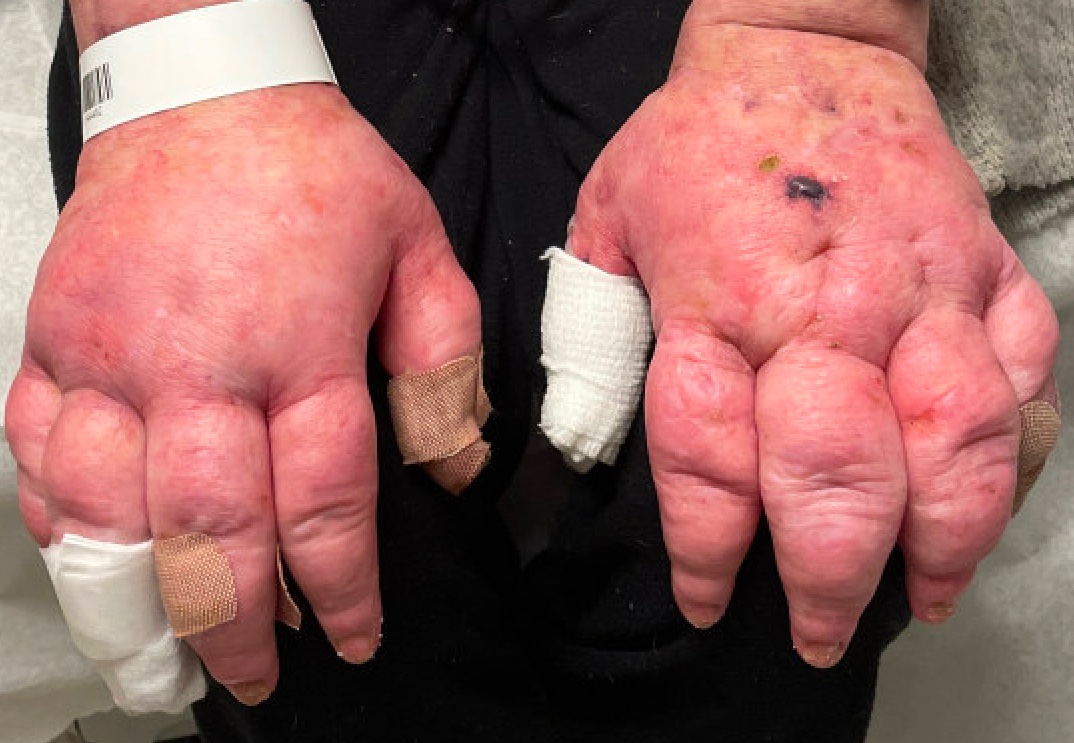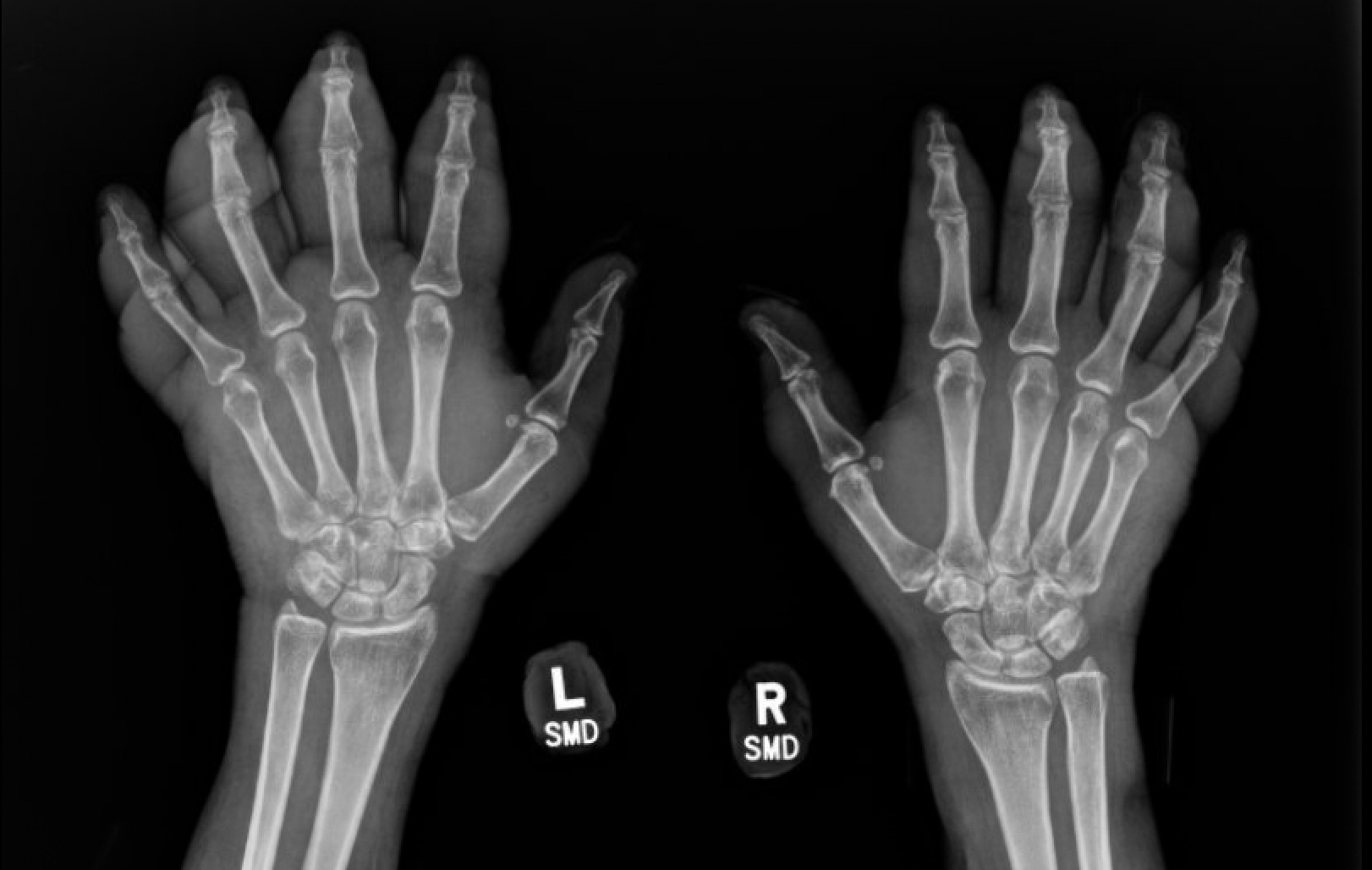Case Presentation: A 30-year-old G1P1 woman with a history of seasonal allergies, depression, and remote intravenous heroin use presented with progressively worsening bilateral hand swelling over the past three years since giving birth. She described painless bilateral hand swelling with nail thinning, skin bruising, decreased finger dexterity, and intermittent leakage of fluid. She did not have joint pain, weakness, or sensory changes. She also denied dysphagia, dyspepsia, skin thickening, cough, exertional dyspnea, or other skins changes. She was previously evaluated by her local rheumatologist and thought to have a manifestation of systemic lupus erythematosus. She was treated with prednisone, azathioprine, mycophenolate, and belimumab without improvement of swelling or symptoms. She presented to the emergency department for further evaluation. On admission, she was afebrile and hemodynamically stable. On exam, she was found to have diffuse pitting edema of her fingers and hands with blanchable erythema, poorly healing wounds, and reduced range of finger movements (Figure 1). There was no tenderness, warmth, or sensory deficits. Basic labs including comprehensive metabolic panel, complete blood count, and coagulation profile were all normal. ANA was weakly positive to 1:160 in a speckled pattern. All other serological studies were negative or within normal limits, including thyroid studies, erythrocyte sedimentation rate, C-reactive protein, hepatitis C antibody, C3 and C4 complements, anti-dsDNA, anti-Sm, anti-RNP, anti-Ro/A, anti-SCL70, and anti-centromere antibodies. Bilateral hand radiographs were negative for osseous abnormalities or inflammatory arthropathy (Figure 2). Skin biopsy was deferred given the risk of poor wound healing. Dermatology and rheumatology specialists were consulted.In the absence of positive radiological or serological findings, and in context with her history of intravenous drug use and onset of symptoms following pregnancy, she was determined to have puffy hand syndrome (PHS).
Discussion: PHS is a rare condition thought to be caused by lymphatic obstruction from an inflammatory reaction caused by repeated superficial injections of toxic substances.1 Few cases are described in the literature, although it is estimated to effect up to 7-16% of intravenous drug users with risk factors including injection sites of hands and feet, female gender, and pregnancy. 2 There is no curative treatment with management based on supportive care including compression bandages, elastic clothing, lymphatic massage, and cessation of IV drug use. Given the opioid epidemic prevalent throughout the country, it is of important for hospitalists to recognize this condition to avoid ordering unnecessary tests and to provide appropriate supportive care.
Conclusions: PHS is a rare condition with risk factors including female gender, pregnancy, and intravenous drug use. The proposed mechanism is lymphatic obstruction from inflammatory destruction and fibrosis caused by injection of toxic substances. There is no curative treatment and management is focused on alleviation of swelling through a multidisciplinary approach.


